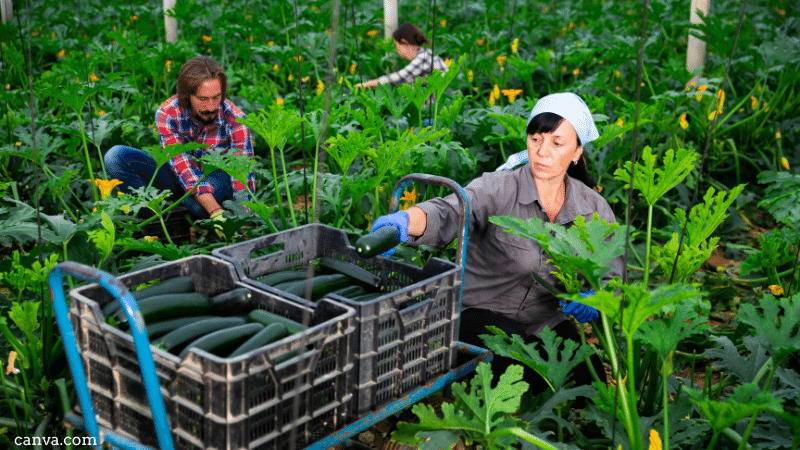Matteo Metta and Oliver Moore
Introduction
As the negotiations start to come to a close, this article focuses on the remaining fair and green considerations. We shed light on the state of play in the CAP post 2022 inter-institutional negotiations, particularly in relation to those articles of the CAP Strategic Plan Regulation which are still open to political and technical discussions. So what’s the deal?
A fairer CAP in the proposal (June 2018)
Based on the Commission’s proposal, a fairer CAP was achievable by introducing a full package of interlinked instruments:
- Article 4: Definition of genuine farmers (e.g. although without introducing a blacklist [1])
- Article 15: Mandatory capping and degressivity. The funds saved would primarily be used for financing complementary redistributive income support for sustainability (CRISS)
- Article 20: Internal convergence (to even up basic payment rates e.g. all payments entitlements would have a value of at least 75% of the average planned unit amount for basic income support by claim year 2026 -EP demands 100%)
- Article 25: Round sum payment for small farmers
- Article 26: CRISS
- Article 27: Complementary income support for young farmers
The “fairness potential” of each decision made at EU and national level in relation to these points is better estimated when these are appraised together, as a package, rather than individually.
For instance, there is no point in claiming that a CAP Strategic Plan is fairer just because it includes lump sum payments for small farmers (Art. 25) while it continues to pay large beneficiaries without an effective capping or degressivity (Art. 15) or does not move towards internal convergence (Art. 20). Similarly, there is no point in introducing capping or degressivity to large beneficiaries if there are no effective rules to ensure their enforcement on the ground.
Finally, other payments shall possibly be considered to draw strong conclusions on the fairness of the future CAP post-2022 (e.g. coupled payments, eco-schemes, agri-environmental payments).

A fairer CAP in the trilogues negotiations (May 2021)
Until 20 May (i.e. a few days before the final super trilogues scheduled on 25 and 26 May), there are still divergent positions between the Parliament and Council on many of the above listed points. Here we discuss some of them.
Capping: voluntary or mandatory (with a loophole)?
The Council is striving for voluntary degressivity and capping of payments above 100 000 EURO/year. The Parliament is defending its mandate for a mandatory application but with a loophole that allows the Member States to avoid introducing them if they allocate at least 12% of direct payment budget to CRISS (redistributive payments). This solution is strongly advocated by Germany (see analysis), but is convenient for many other MSs who would prefer not to take money away from large beneficiaries.
Without an impact assessment, it is difficult to believe that this arbitrary share of 12% can sufficiently change the skewed distribution of payments in the Member States and respect the original proposal of the Commission. Certainly, this facilitates the approval by the Commission of CAP Strategic Plans that might continue to pay large beneficiaries like currently happening in many Member States. Meanwhile the Commission circulated statistics that show anything less than 12% is ineffective to redistribute from bigger to smaller. The Council is still far from this figure, with MS currently not willing to go more than about halfway.
If one looks at the 2018 proposal, the Commission was aware that either a ‘voluntary capping’ or a ‘mandatory one with shallow exemption’ could end up with maintaining the status quo and achieve no substantial adjustments. Up to date, none of the co-legislators have presented an impact assessment (e.g. 12% vs 30% allocation to redistributive payments) to justify this exemption from capping.
Even if the co-legislators agree to leave it up to the Member States to calculate the minimum share ‘based on their own assessment of needs’, there is much to be worried about considering their interpretation of the so-called ‘strategic approach’ of the CAP plans.

Capping: effective enforcement and accounting?
In October 2020, the Parliament voted for an amendment to prevent the effects of capping being bypassed with the artificial creation of smaller sub-entities. This amendment might be withdrawn but is covered by another article of the Horizontal FMM Regulation. It is important to keep track of this until the final rounds.
Furthermore, the Parliament’s position asked the Commission to collect information about the total sum of subsidies received by a farmer (or group thereof) through CAP Pillar I and II, using data mining tools to assess total income by ultimate beneficial owners. Besides doing this for transparency reasons (introduced by EP also for groups under the FMM regulation), the amendment from the EP’s budget control committee (the so-called “Hohlmeier amendment” pushed by their charismatic chairperson) asks to stop payments that exceed a 500,000 EURO/year from Pillar I direct payments and one million Euro from Pillar II investments. This is very legitimate demand from the EP to increase transparency and improve targeting of public spending. However, the Council might strongly oppose this amendment on the basis that it is “discriminatory” and can increase “administrative burden”. This is unbelievable under the claims of a fairer CAP and modernised delivery model. In fact, the Commission amended its own position by proposing the compulsory use of the Arachne data-mining tool in the FMM regulation, to enable such investigation and transparency; this concept is supported by the EP, who want such tools to be used in all MS by the 2025 mid-term evaluation that they also are pushing for.
Finally, for an effective enforcement of degressivity and capping, besides fixing the cornerstones (thresholds, voluntary vs mandatory nature, exemptions), some points are still under negotiations, namely: whether payments for eco-schemes and young farmers shall be accounted in the reductions, as well as which kind of labour costs can be exempted (contracted and/or non-contracted labour?).
Internal convergence or perpetual mirage?
With internal convergence, the Member State shall ensure that all unit amounts of basic income payments get closer to the national average by 2026 at the latest. The Parliament is defending its mandate for a full convergence (100%), whereas the Council is striving for 85% convergence (i.e. all payment entitlements have a value of at least 85% of the average planned unit amount for the basic income support).
The Commission, who initially proposed a lower status quo target for internal convergence (75%), could play a more incisive role here in favour of the Parliament’s mandate, considering that the Member States with historical entitlements should in fact have started and completed this process years ago .
However, this is a challenging reform for agri-ministers at national level, and the negotiations at EU level are still open. Most likely, this decision might be part of a deal which, as usual, will grant more flexibility to the Member States.
As we have explored in the case of Ireland, there is still hope to see an ambitious step towards 100% convergence, although there are clear signs to maintain business as usual.
A green or grey CAP?
Policy decisions are still open on the some important elements of the green architecture:
- Conditionalities: GAEC 2, 4, 8 and 9
- Article 28 Eco-schemes: mainly regarding objectives, areas of actions, areas under payment, criteria for approval
- Article 65 Agri-environment-climate commitments: mainly regarding the EP request to include financial incentives – besides covering income foregone and costs incurred – that might not be compliant with the WTO rules.
Here below more information on the aspects under negotiations:
Regarding GAEC 2 ‘Protection of wetland and peatland’, the negotiators have to decide whether to grant even more flexibility to apply this conditionality as from the claim year 2024 or 2025 (provided that the Member States demonstrates the need for a delay). This is likely based on the ongoing mapping exercise being carried out by the Commission’s scientific department, the Joint Research Centre (JRC), to enable them to identify the areas concerned.
Regarding GAEC 4 ‘Buffer Strips along water courses’, where pesticides and fertilizers cannot be used, the negotiators will decide whether some Member States can be exempted and apply buffer strips of less than 3m, where small fields coincide with drainage ditches; the question remains whether the rule is waived for whole member states or only such areas.
Regarding GAEC 8 ‘Crop rotation’, the Council wants to water it down by considering crop diversification as equivalent practice. A decision has to be taken also on the size of ‘small farmers’ exempted from this rule. At the moment, the size is ranging between a maximum of five or ten hectares. If the larger size is agreed, around 70% of farmers in the EU will be exempted from this fundamental conditionality. If the smaller size is selected, then about 50% would be exempt. The FMM regulation also allows for simplified conditionality checks of farms below 5ha, so EP is hoping for consistency between the two laws. As to the content, the Council is also pushing for other practices (e.g. primary and secondary crop within the same year to be considered rotation), while the EP is pushing for an additional safeguard prohibiting monocultures.
Regarding GAEC 9 ‘Landscape features’, the discussion is still open, but only arable land (instead of all agricultural land) is likely to be devoted to non-productive features. The minimum percentage is very far from the at least 10% target proposed for the biodiversity strategy, although landscape features also in monocultural grasslands and permanent crops would also be beneficial for overall system productivity. The minimum percentage in this conditionality can even be lower in the case of farmers under eco-schemes commitments. If this is agreed in the final negotiations, it will be difficult to talk about ‘enhanced’ conditionalities. As for GAEC 8 above, many exemptions that limited the effectiveness of Greening are being recycled for this rule.
Regarding eco-schemes, the amendment voted by the European Parliament to introduce the boost schemes for competitiveness under Article 15 has been (rightly) withdrawn. Some interesting novelties might be introduced regarding the justifications or criteria to demonstrate the contribution of an eco-scheme practice to at least two CAP specific objectives, including also animal welfare and antimicrobial resistance.
Mid-way “homework” expected by EP:
While a full review and new legislative proposal is tricky in a shorter programming period of 5 only years, there’s also a potential package of mid-term reviews /interim evaluation and other outstanding issues that EP expects the MS and Commission to have completed by the halfway stage. They need to watch out for tricks where e.g. “end of/31 Dec 2026” means effectively 2027, already at the very end of the period, therefore they would be advised to push for 2025.
- Alignment with new legislation (and targets ) arising from the green deal (F2F and Biodiversity strategies) which will have been co-decided by then;
- Accurate climate expenditure tracking methodology (link to art.87, not overestimating contribution by 2, according to Court of Auditors );
- Application of data mining tools like Arachne for ensuring transparency on ultimate beneficial owners, land concentration and corruption;
- Maps for wetlands and peatlands for control of GAEC 2 (being prepared now by JRC, last ones will be ready for 2024 or 2025).
Conclusions
We are getting closer to the final agreements on the CAP post-2022, but the decisions at the core of this reform have been pushed at the end of the trilogues.
Regarding the fairness of the CAP, we have focused mainly on the above articles which are currently discussed together as part of a package deal. Besides these, it is argued here that, a fairer and more targeted CAP needed far reaching reforms in the policy priorities, design, and delivery. Some points that we already raised in previous analyses are:
- The higher use of bio-physical maps and GIS among authorities at national and regional levels, to quantify the needs and improve the targeting, monitoring, and evaluation of agri-environmental payments (RDP).
- The addition of EU governance criteria for a fairer recognition of producer organisations, which reaches out more to small-medium cooperatives, avoids unfair competition within and beyond the EU, and more importantly, ensures that farmers strengthen their positions along the supply chain, by A. owning, B. controlling, and C. getting equal profits from the entities receiving public money through operational programmes.
Capping loopholes and lack of comprehensive information gathering, as well as convergence delays, are the possible areas of concern from a fairness perspective. Regarding greening, some novelties might still be introduced (e.g. GAEC 2, a new definition of eligible hectare). However, most of the aspects are still under negotiations. That said, the range of exemptions and flexibilities still on the cards for GAEC 2, 4, 8 and 9 are concerning. Overall, what we know of the negotiations in this final phase does not auger well for either a green or a fair CAP.
Given this, and as some points regarding monitoring and evaluation are also open, it is important that negotiators can establish a mid term review of the National CAP Strategic Plans by 2025.
[1] The definition of active farmer introduced in the CAP 2014-2020 excluded 10.000 claimants from direct payments in 2015, according to European Commission DG AGRI (2021, page 120) Evaluation on the impact of the CAP measures towards the general objective ‘viable food production’.
Download this article as a PDF
 This article is produced in cooperation with the
This article is produced in cooperation with the
Heinrich Böll Stiftung European Union.
More on CAP Strategic Plans
CAP Strategic Plans: Germany Taking Steps in the Right Direction?
CAP Strategic Plans: Support to High-Nature-Value Farming in Bulgaria
Commission’s Recommendations to CAP Strategic Plans: Glitters or Gold?
German Environment Ministry Proposals For CAP Green Architecture
CAP Performance Monitoring and Evaluation Framework – EP Position
A Rural Proofed CAP post 2020? – Analysis of the European Parliament’s Position
CAP Beyond the EU: The Case of Honduran Banana Supply Chains
CAP | Parliament’s Political Groups Make Moves as Committee System Breaks Down
CAP & the Global South: National Strategic Plans – a Step Backwards?
CAP Strategic Plans on Climate, Environment – Ever Decreasing Circles
European Green Deal | Revving Up For CAP Reform, Or More Hot Air?
Climate and environmentally ambitious CAP Strategic Plans: Based on what exactly?
How Transparent and Inclusive is the Design Process of the National CAP Strategic Plans?






